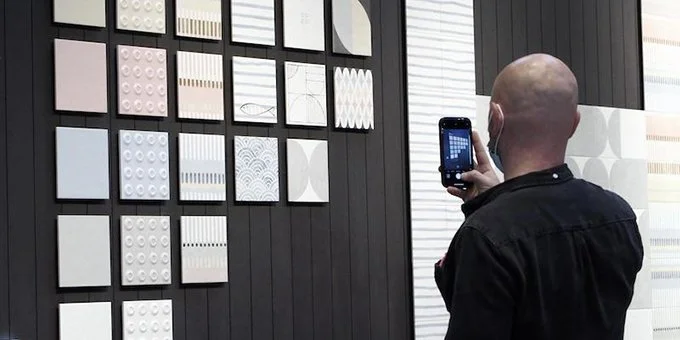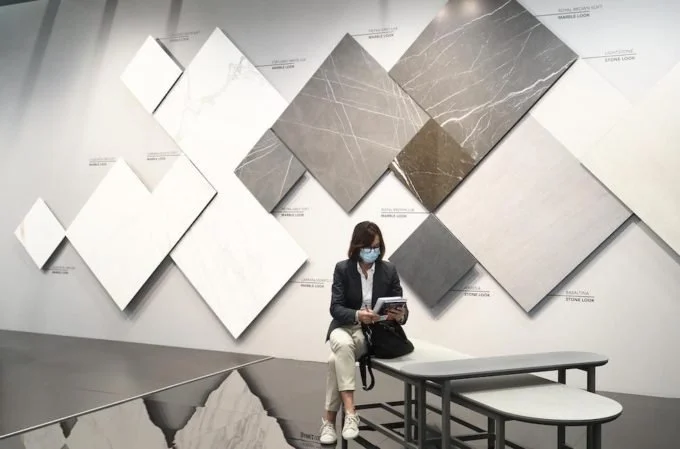How the War in Ukraine is Affecting the Ceramic Tiles Sector
The last ship loaded with clay and kaolin, a rock used for the production of tiles, left the port of Mariupol a few days before the Russian army invaded Ukraine. It disembarked at the end of February at the port of Ravenna, in Emilia-Romagna, to unload tons of material in the warehouses that supply the companies in the ceramic industrial district of Sassuolo, in the province of Modena and that of artistic ceramics in Faenza.
Since the supply of raw materials from Ukraine was suspended due to the war, technicians and chemists have been working to try to maintain the high quality of the products that, in recent decades, have contributed to the growth of the Italian ceramic industry. In fact, 25 per cent of the raw materials used in the ceramic sector in Italy arrived from Ukraine, and most of the clays are considered valuable and indispensable for the production of the most expensive tiles with a high-profit margin.
Tile manufacturers will have to do without it. To find a compatible and competitive alternative, they will need to find another “recipe”. In other words, a new mixture of clays, kaolins and feldspar with material imported from other countries.
Clay and kaolin were extracted mainly in the quarries in Donbas, a territory that, on paper, is part of Ukraine but that since 2014 has been occupied by pro-Russian separatists. It was one of the first areas to be occupied by the Russian army.
In recent years, the export of this type of raw materials has developed thanks to the construction of roads specially designed to pass large trucks headed for the ports of Mariupol and Odesa. The ships that supplied the European ceramic districts departed from there.
Clays from Ukraine are unique as they have greater strength and cohesion than the material extracted in other countries. Ukrainian clays are, therefore, suitable for the production of large-format tiles with thin thicknesses, which are increasingly in demand on the market and not easy to make with other raw materials.
Since the beginning of the Russian invasion of Ukraine, tile manufacturers have understood that the effects on imports of materials would have been significant. They put technicians to work in their workshops to find a way to maintain the same quality and the exact same product with a different recipe.
It is not a totally new job. For years tile manufacturers have set up laboratories to check the quality of the imported material and study light corrections to the recipes. Without an entire quota of material, however, more complicated and original choices will have to be made. In fact, the composition of the tiles is also linked to the market, oriented by aesthetic choices dictated more by fashion and trends and less by production and procurement logic.
The latest ship to arrive at the port of Ravenna with the clays quarried in Ukraine will guarantee supplies for at least a couple of months. It is difficult to predict what the situation in Donbas will be like at the end of that period. Given how things are progressing in Ukraine, it is unrealistic to think that mining will resume anytime soon. The quarries were forced to shut down, and all foreign employees left Ukraine.
The alternative is to purchase the raw material from other countries, such as Germany, France, Austria, Turkey, and Portugal, but also some Italian regions, such as Sardinia and Piedmont.
In addition to finding new recipes for tiles, replacing 25 per cent of the raw material quickly brings two other problems. The first is to understand how to transport the material to the factories, whether by sea or train: in both cases, supply times depend on the distance and the infrastructure. The second problem concerns prices destined to increase due to the sudden decrease in supply. Among other things, quarrymen from other countries may not be able to satisfy the growing demand fully.
The interruption of the import of raw materials from Ukraine is only one of the problems the sector faces. Like all companies that consume large quantities of energy, tile manufacturers also struggle with significant price increases. The gas necessary to feed the kilns in which the tiles are fired costs eight times as much as last year.
Tile manufacturers have asked their respective governments to help limit the costs of gas and electricity. So far, the only means to reduce costs have been quite drastic. Some companies have turned off the ovens because it would have been more expensive to leave them on rather than not produce them. Others have activated layoffs until the end of the year. To be precise, it is an extraordinary layoff for a sudden and unexpected event not attributable to company management. It is a preventive layoff that allows companies to limit work in a very short time, two or three days when energy costs are too high.
We hope you have found this interesting and helpful. If you would like to discuss it further or have any questions, please contact us.


